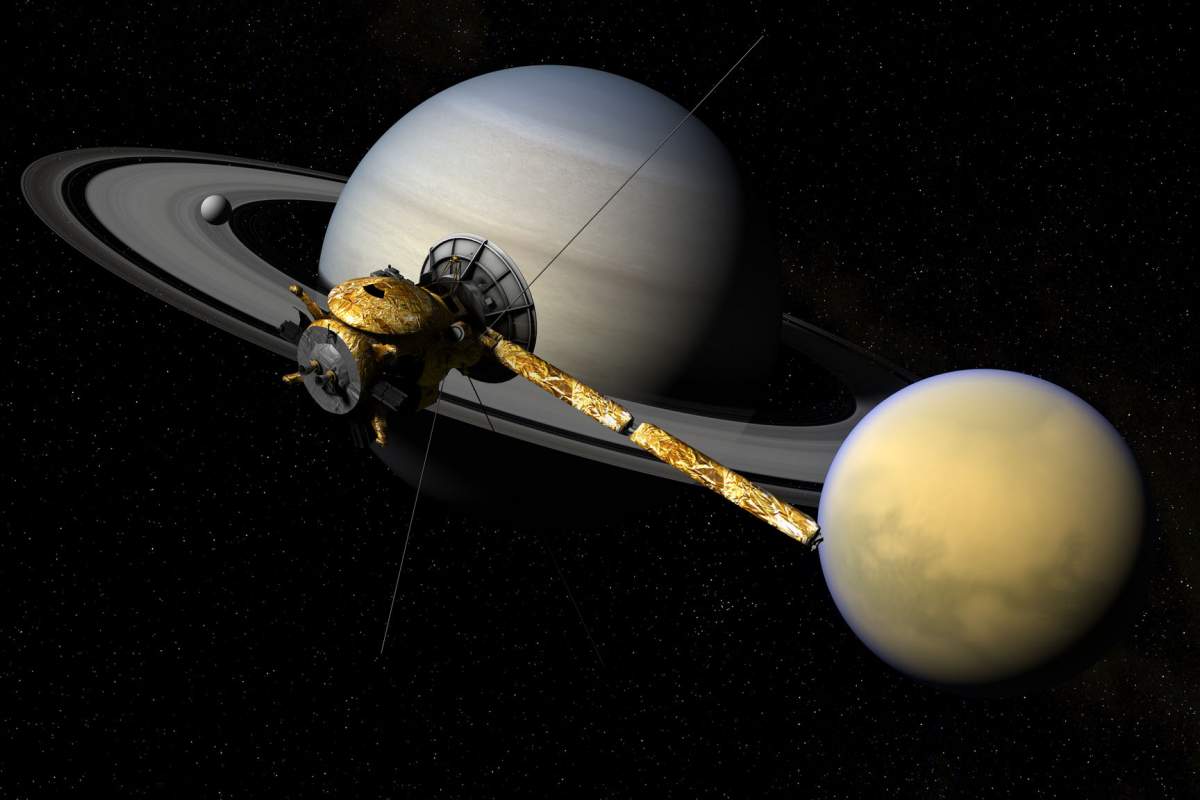
Saturn's largest moon, Titan, is almost as large as Mercury, and has an atmosphere as dense as Earth's. Some astrobiologists are excited about the possibility of life there.
Methane Lakes
The idea of looking for possible life on Titan seems strange. Titan is ten times as far from the sun as Earth is, and its surface temperature is almost three hundred degrees below zero Fahrenheit. Any water there is frozen as hard as rock, and life, as we know it, requires liquid water.
While Titan doesn't have liquid water on its surface, it does have lakes and rivers of liquid methane. Some of the lakes are as large as the Midwestern Great Lakes. Researchers have argued liquid methane might substitute for liquid water in an alien form of biochemistry for Titanian life.
Phosolipid Molecules
There are some reasonable arguments against the possibility of liquid methane being able to perform the same functions as liquid water for life. Consider all the membranes that surround living cells; they're made of phosolipid molecules.
"Titan's atmosphere is thought to be similar to early Earth's."
Phosolipid molecules organize themselves into a membrane barrier because they interact with the electrical properties of water molecules. Liquid methane doesn't have the same electrical properties, and that means that phospholipids couldn't form the membranes that are vital to life.
Besides that, the phospholipid molecules would be too stiff with cold to form a flexible membrane.
Vinyl Cyanide
In 2015, a team of chemists using computer simulated chemistry showed that a substance called vinyl cyanide could form flexible membranes-like the ones that phospholipid molecules form in water-when it dissolved in liquid methane.
Astronomers using a radio telescope in Chile reported discovering the signature of vinyl cyanide in Titan's atmosphere in 2017. And that's why astrobiologists are excited about the possibility of life on Titan.
Thank you to Christopher McKay, Space Sciences Division, NASA Ames Research Center in California for reviewing this episode's script.
Sources And Further Reading:
- Kato, Chizu. Moynier, Frédéric. "Gallium isotopic evidence for extensive volatile loss from the Moon during its formation." Science Advances 28 Jul 2017: Vol. 3, no. 7, e1700571. DOI: 10.1126/sciadv.1700571
- Koren, Marina. "A Crucial Ingredient for Life on Saturn's Largest Moon." The Atlantic. July 28, 2017. Accessed September 19, 2017.
- Stirone, Shannon. "Chemical on Saturn's Moon Titan Could Form Cell Membranes." Popular Mechanics. July 28, 2017. Accessed September 19, 2017.
- Zubritsky, Elizabeth. "NASA Finds Moon of Saturn Has Chemical That Could Form ‘Membranes‘." NASA: Titan. July 28, 2017. Accessed September 19, 2017.









